
How to Use LED YELLOW: Examples, Pinouts, and Specs
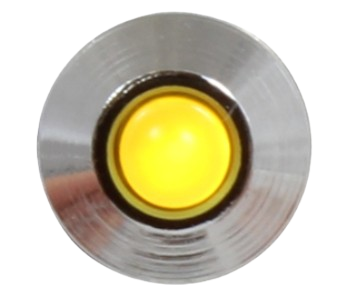
 Design with LED YELLOW in Cirkit Designer
Design with LED YELLOW in Cirkit DesignerIntroduction
The LED YELLOW (Manufacturer: AC, Part ID: LED) is a yellow light-emitting diode designed to emit bright yellow light when an electric current flows through it. This component is widely used in electronic circuits for visual indicators, status displays, and decorative lighting. Its compact size, low power consumption, and long lifespan make it an essential component in various applications.
Explore Projects Built with LED YELLOW
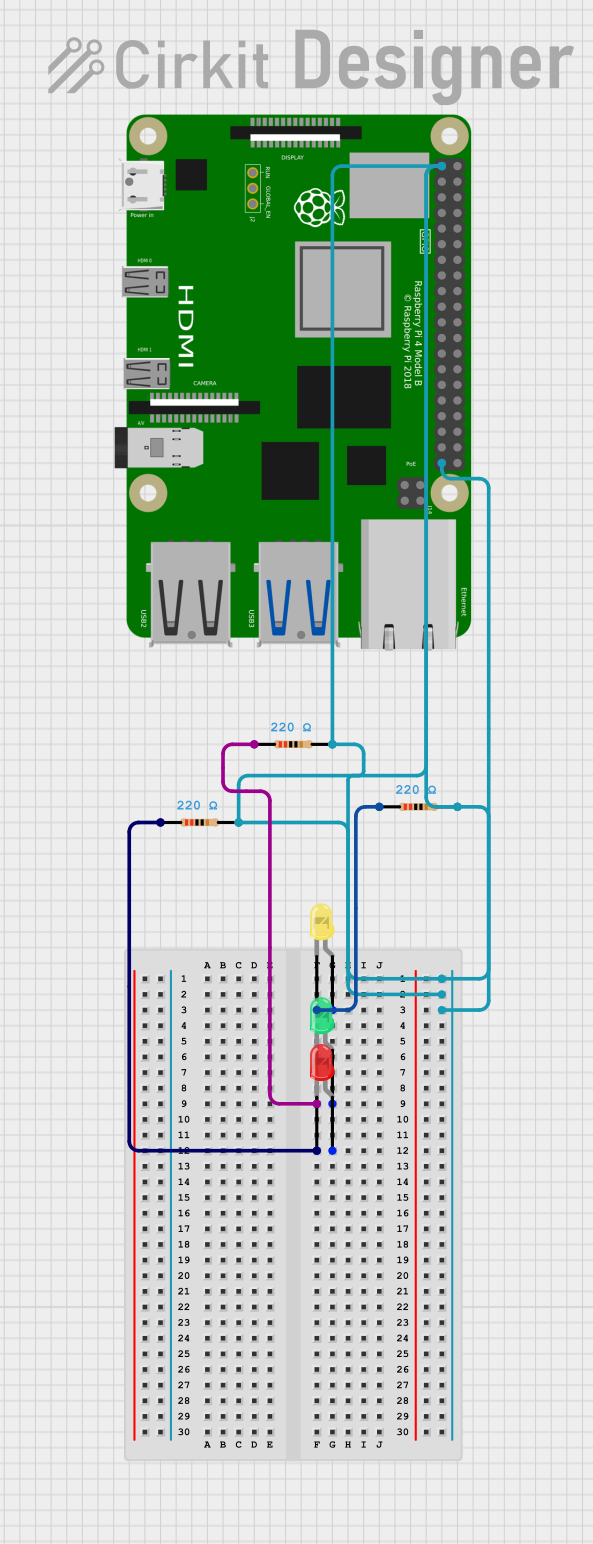
 Open Project in Cirkit Designer
Open Project in Cirkit Designer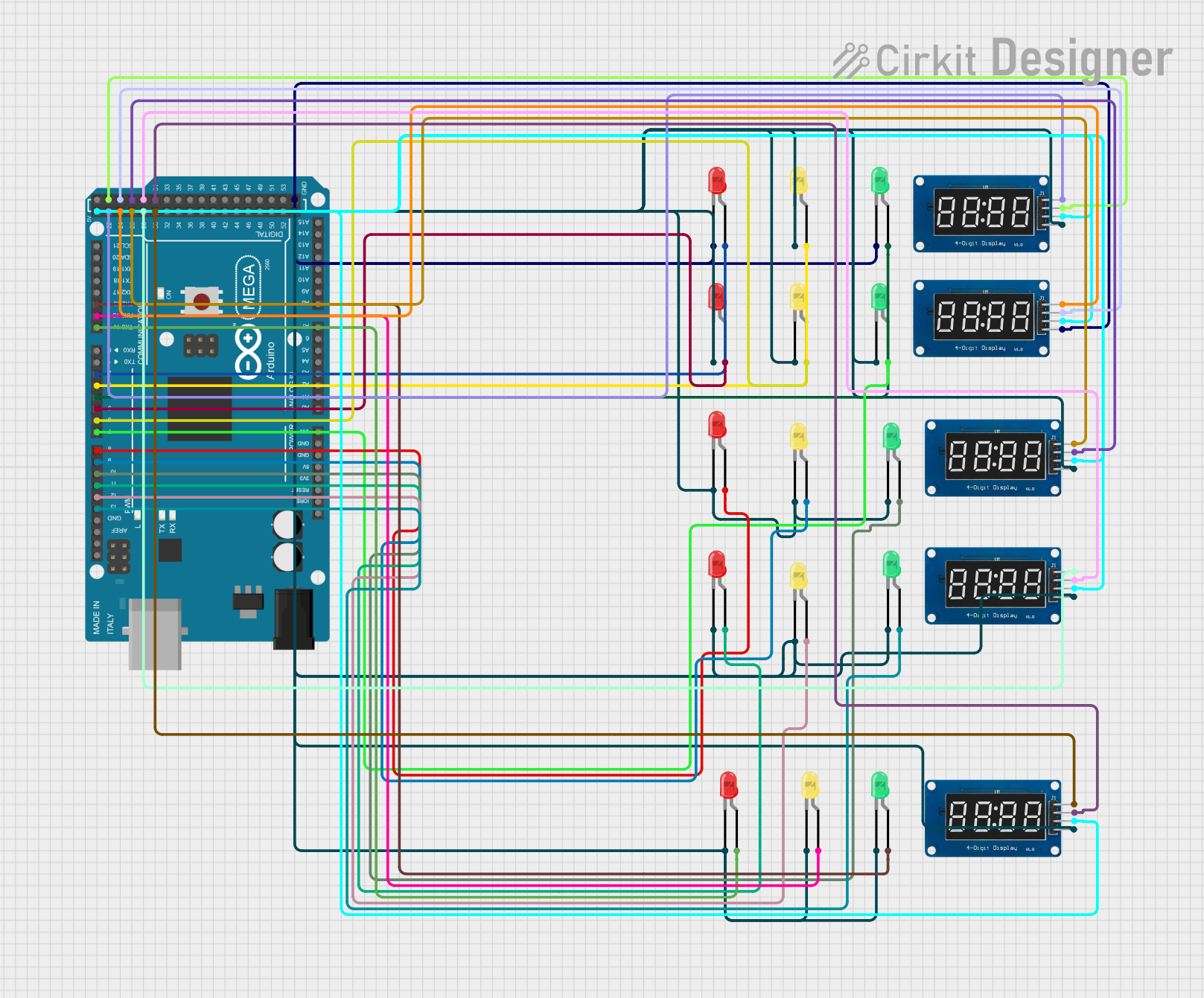
 Open Project in Cirkit Designer
Open Project in Cirkit Designer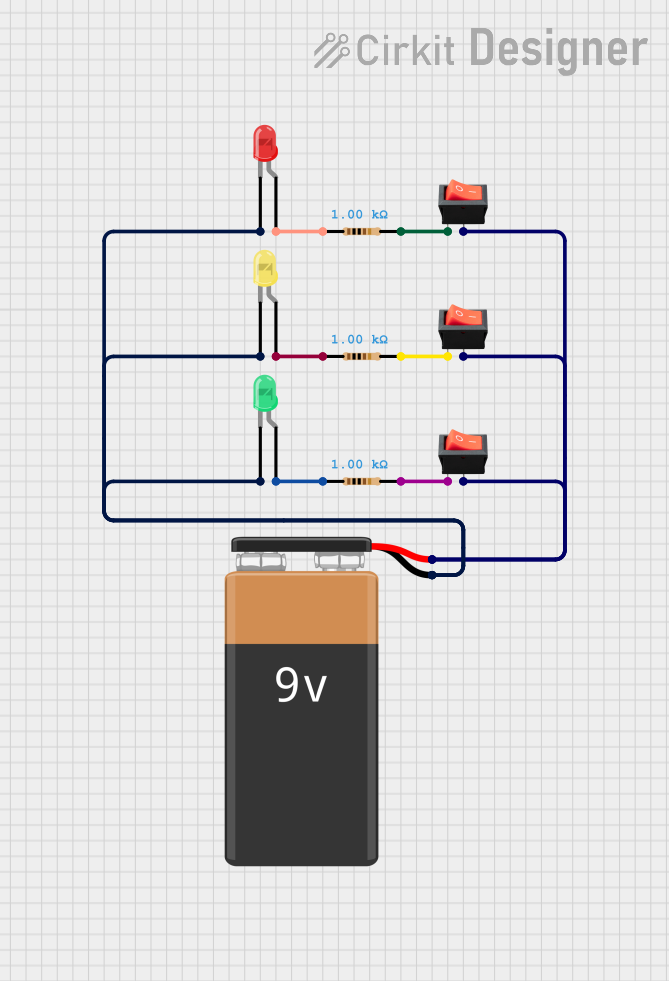
 Open Project in Cirkit Designer
Open Project in Cirkit Designer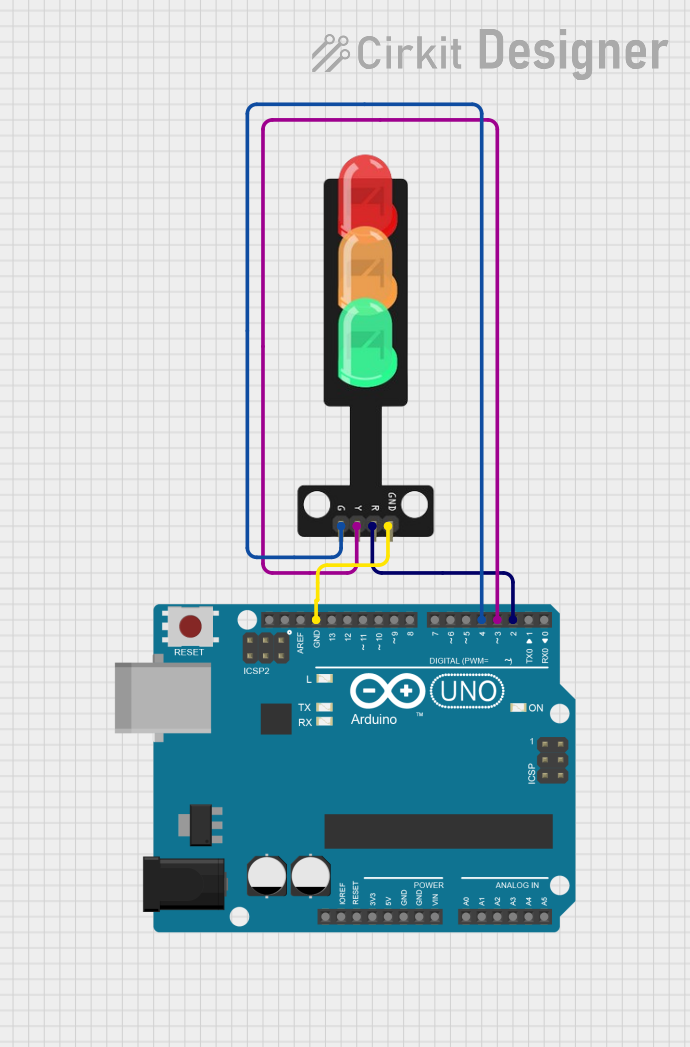
 Open Project in Cirkit Designer
Open Project in Cirkit DesignerExplore Projects Built with LED YELLOW

 Open Project in Cirkit Designer
Open Project in Cirkit Designer
 Open Project in Cirkit Designer
Open Project in Cirkit Designer
 Open Project in Cirkit Designer
Open Project in Cirkit Designer
 Open Project in Cirkit Designer
Open Project in Cirkit DesignerCommon Applications
- Power and status indicators in electronic devices
- Signal and warning lights
- Decorative and ambient lighting
- Educational and DIY electronics projects
- Displays and signage
Technical Specifications
Below are the key technical details for the LED YELLOW:
| Parameter | Value |
|---|---|
| Manufacturer | AC |
| Part ID | LED |
| Color | Yellow |
| Forward Voltage (Vf) | 2.0V - 2.2V |
| Forward Current (If) | 20mA (typical) |
| Maximum Current (Imax) | 30mA |
| Wavelength | 585nm - 595nm |
| Viewing Angle | 20° - 30° |
| Power Dissipation | 60mW |
| Operating Temperature | -40°C to +85°C |
| Package Type | 5mm (THT) or 3mm (THT) |
Pin Configuration
The LED YELLOW has two pins:
| Pin Name | Description |
|---|---|
| Anode (+) | Positive terminal; connect to the power supply or resistor. |
| Cathode (-) | Negative terminal; connect to ground. |
Note: The longer leg of the LED is the anode (+), and the shorter leg is the cathode (-). If the legs are trimmed, the flat edge on the LED casing indicates the cathode.
Usage Instructions
How to Use the LED in a Circuit
Determine the Resistor Value: To prevent damage, always use a current-limiting resistor in series with the LED. The resistor value can be calculated using Ohm's Law: [ R = \frac{V_{supply} - V_f}{I_f} ] Where:
- ( V_{supply} ) is the supply voltage.
- ( V_f ) is the forward voltage of the LED (2.0V - 2.2V).
- ( I_f ) is the desired forward current (typically 20mA).
For example, with a 5V supply: [ R = \frac{5V - 2.1V}{0.02A} = 145\Omega ] Use the nearest standard resistor value (e.g., 150Ω).
Connect the LED:
- Connect the anode (+) to the positive side of the power supply through the resistor.
- Connect the cathode (-) to the ground.
Test the Circuit: Power the circuit and observe the yellow light emitted by the LED.
Important Considerations
- Polarity: LEDs are polarized components. Reversing the polarity may prevent the LED from lighting up or damage it.
- Current Limiting: Always use a resistor to limit the current. Exceeding the maximum current (30mA) can permanently damage the LED.
- Heat Management: While LEDs generate minimal heat, ensure proper ventilation in high-power applications.
Example: Connecting to an Arduino UNO
The LED YELLOW can be easily interfaced with an Arduino UNO for various projects. Below is an example of blinking the LED:
// Example: Blink a yellow LED using Arduino UNO
// Connect the anode (+) of the LED to pin 13 through a 220Ω resistor
// Connect the cathode (-) of the LED to GND
void setup() {
pinMode(13, OUTPUT); // Set pin 13 as an output
}
void loop() {
digitalWrite(13, HIGH); // Turn the LED on
delay(1000); // Wait for 1 second
digitalWrite(13, LOW); // Turn the LED off
delay(1000); // Wait for 1 second
}
Tip: Adjust the
delay()values to change the blinking speed.
Troubleshooting and FAQs
Common Issues
LED Does Not Light Up:
Cause: Incorrect polarity.
Solution: Ensure the anode (+) is connected to the positive voltage and the cathode (-) to ground.
Cause: No current-limiting resistor or incorrect resistor value.
Solution: Verify the resistor value and connections.
LED is Dim:
- Cause: Insufficient current.
- Solution: Check the resistor value and ensure it allows enough current (e.g., 20mA).
LED Burns Out:
- Cause: Excessive current.
- Solution: Use a proper current-limiting resistor to prevent overcurrent.
Flickering LED:
- Cause: Unstable power supply.
- Solution: Use a stable power source or add a capacitor to smooth the voltage.
FAQs
Q1: Can I connect the LED directly to a 3.3V or 5V power supply?
A1: No, always use a current-limiting resistor to prevent damage to the LED.
Q2: How do I identify the anode and cathode if the legs are trimmed?
A2: Look for the flat edge on the LED casing, which indicates the cathode (-).
Q3: Can I use the LED with a PWM signal?
A3: Yes, the LED can be dimmed or controlled using a PWM signal from a microcontroller like Arduino.
Q4: What happens if I exceed the maximum current rating?
A4: Exceeding the maximum current (30mA) can permanently damage the LED.
By following these guidelines, you can effectively use the LED YELLOW in your projects and ensure reliable performance.